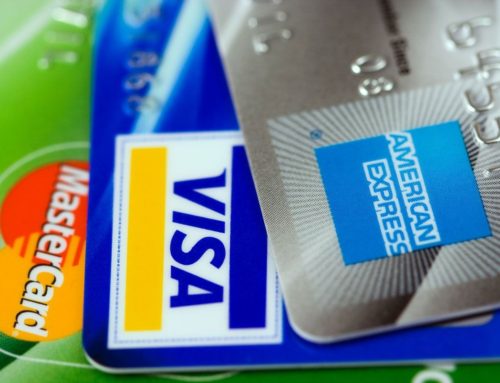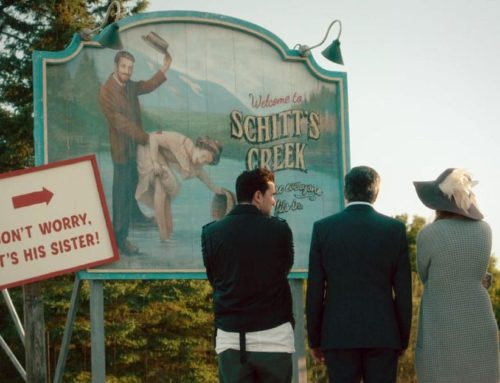It’s been over four years since I started taking the business of composition seriously. I’ve made incredible strides and am getting ever closer to my goals. But it’s a long, hard, slog. If you’re anything like me there are times you want to quit. Or the Impostor Syndrome rises up within you and screams in your ear, “Why are you even trying? Your music is not as beautiful or engaging as everyone else’s! No one is going to commission you or buy your music!”
I know that’s a lie.
One way I dig out from the discouragement is to remember why I’m in this for the long haul. And this is why you should be, too.
Lifetime Value
You don’t have to spend a lot of time reading business, marketing, or management literature before you encounter the term, lifetime value of the customer. It’s not hard to understand the concept.
The simplest definition of the term (taken from Wikipedia) is the “prediction of the net profit attributed to the entire relationship with a customer.” But what does that mean to us as creative entrepreneurs?
Businesses try to predict how much a customer will spend with them over the course of their relationship. That customer, then, has a monetary value that affects how much a business will earn.
Let’s look at a grocery store as an example.
If a customer spends, on average, $150/week on groceries that customer is worth $7,800/year. If the average customer for that grocery store has a lifetime relationship of five years (meaning, most people are loyal to that store for five years before moving, changing stores, or for any other reason stopping to shop there), the lifetime value of that customer is $39,000.
It should be clear that the grocery store’s best interest is in keeping the customer for as long as possible.
But it doesn’t stop there. The grocery store now has to calculate how much it costs to acquire a new customer and what it costs to keep current customers. It may cost $250 in advertising for each new customer to come in the door (I’m making these numbers up, but grocery stores normally advertise through print media and direct mail, which is not cheap). That means that if a customer only shops there once the store actually loses money.
Have you ever shopped at a store only once because you had a coupon or they were holding a deal too good to pass up? Almost certainly the store lost money in that transaction. And they lost money in the long term because they failed to build a relationship with you.
Relationships
The key word in the definition is relationship. One idea that comes up regularly on the podcast is that music is a relationship business. It’s less transactional—here’s my music, buy it—and more relational—let’s learn to trust each other and know and understand each other’s problems and desires.
There’s an element of service in a relationship. And as Seth Godin eloquently points out in his latest book, This is Marketing, a true marketer wants to change the world for the better. As composers and performers we want to make a difference and impact people’s lives in meaningful ways. It requires a relationship to do that.
If the grocery store, continuing our example from above, can find a way to build a relationship with you they can start to turn a real profit. They have to demonstrate to you that shopping at their store meets your needs and desires. You have to want to come back.
Maybe their management is open to a discussion. Perhaps they special ordered an item for you. Or they solved a problem or mistake quickly and with grace.
Or maybe they continued to invest financially into the relationship.
It is common for grocery store chains to offer some sort of loyalty reward. My grocery store gives points that are used against the price of gas at the grocery store’s gas station. Just a few weeks ago my wife filled up our vehicle for $0.02/gallon because we had enough gas points built up.
This is an expense of the grocery store and is often provided at a loss. The term is, in fact, a loss leader. Something the store offers to get you to keep coming back. It’s one part of the relationship.
Let’s say that on average the grocery store customer earns $0.50/gallon each week they shop at the grocery store. The customer has a 15-gallon gas tank and saves $7.50/week or $390/year on gas. Over a five-year period that amounts to $1,950 in savings. The grocery store is paying that cost for the customer.
But remember that the customer has a 5-year lifetime value of $39,000. So if the store spent $250 to get the customer in the door and is spending $1,950 over five years to keep the customer coming back, the lifetime value of the customer is now $36,800.
It’s obviously much more efficient and less expensive to keep the current customer than it is to constantly be bringing new ones in the door.
Of course, that’s not all profit, but a grocery store only has to have 128 customers like this one to have over $1,000,000 in gross annual sales. Depending on the location of the store, they might have several thousand customers just like this one.
What Does This Have To Do With Me?
Have you ever asked yourself what is the lifetime value of your customers? Have you even clearly defined who your customers are? And what are you doing to build a long-term relationship with them?
I am not advocating spending a lot of money in advertising, discounts, or loss leaders. The above is an example to help you understand that it is in your best interest to develop long-term relationships with those who are interested in your music. This is also why Kevin Kelly’s 1,000 True Fans theory is so powerful.
Kelly says an artist only needs 1,000 fans who are willing to spend $100 annually in order to make a decent living. Are you working to build your 1,000 true fans?
As composers we often focus on a single commission. It’s a great honor to be asked to write music for someone. And it feels good to receive a decent sized check for our creative work. But there’s a secret among the most successful composers, even the ones I’ve featured on the podcast. This isn’t a secret that’s kept so others are in the dark. In fact, I’m convinced most of those composers aren’t even aware of what they’re doing. But here’s the secret:
So often I see composers celebrating a commission without then investing in the relationship. It could be for $250 or it could be for $10,000. It doesn’t matter the number. Once the composer delivers the music that’s the end of the story. The lifetime value of that customer was the price of the commission. How much effort went into securing that commission? How many emails did the composer send? How many phone calls made? How much time connecting on social media? Though not as measurable as the grocery store’s advertising costs, these are the costs to the composer to “getting a customer in the door.”
But what if you kept in touch with those people through your newsletter? What if every other year they commissioned you again? Or joined a consortium? Or purchased each new set of score and parts for their ensemble that you published? It’s possible for the lifetime value of that customer to increase almost exponentially.
There are some wildly successful composers with whom I am fortunate to be friends. And I marvel at their success. These composers have worked hard at developing a relationship with their customers (directors, ensembles, and performers). The customers represent a deep well that never runs dry.
The lifetime value of those costumers can be worth many thousands of dollars. This isn’t an exaggeration.
If one ensemble joins a $500 consortium once every five years for 20 years that’s $2,000. If every other year they buy one of your scores for $100, that’s an additional $1,000.What if this was true for 20 ensembles at the same time? That would be $60,000 over 20 years!
If each ensemble spreads the word because they LOVE being in relationship with you they could bring in 5 more customers each. If each of these new customers spends the same with you, that’s an extra $15,000 over 20 years.
What if you reached Kelly’s mythical number and had 1,000 customers in relationship with you. Undoubtedly, the average each of them would spend annually would exceed $100. But if you get there, that’s $100,000 you’ve earned in an a year.
The math is not hard. And it doesn’t take much to scale to impressive numbers. What’s challenging is building a relationship with your customers.
In It For the Long Haul
This is why I’m in it for the long haul. I’m working to build relationships.
This is why I invest in attending the conferences where they people I want to build a relationship with are at.
This is why I am carefully, and painstakingly, building a mailing list.
And this is why you should, too.
We don’t just want 1,000 fans that will spend $100 once. We want 1,000 fans that will spend $100 every year over the course of our career. The lifetime value for each fan, or customer, is an important part of building a long-term career.
The business of music is a long-haul business. Nothing happens over night. If anything, it’s more like ten years to overnight success. Ten years of building relationships, being trustworthy, delivering on time and as promised, and writing the best music you can write.





